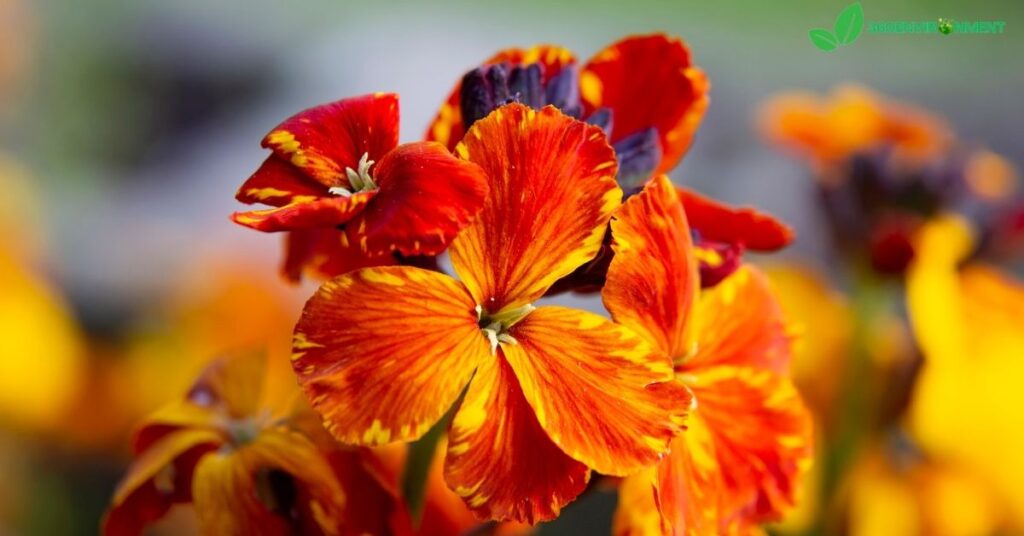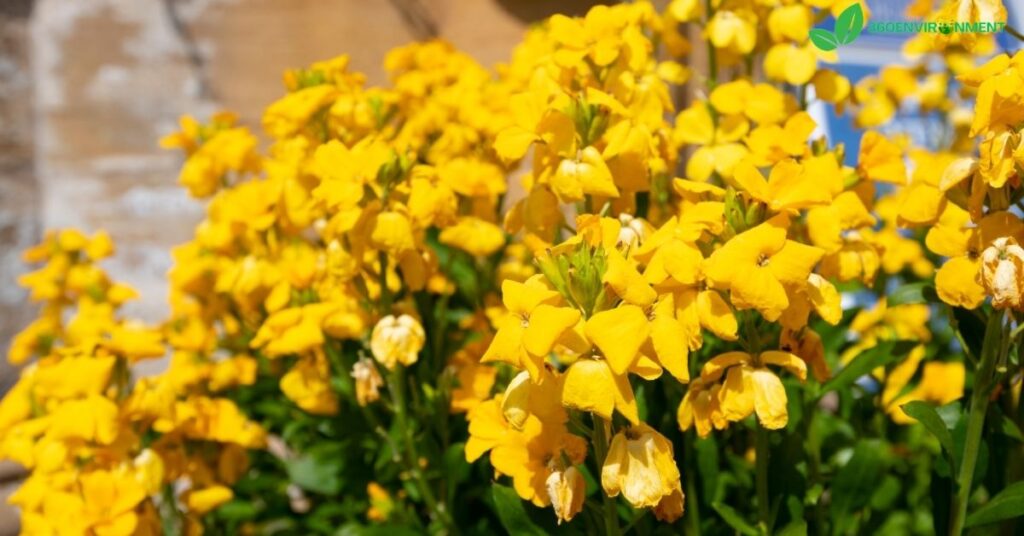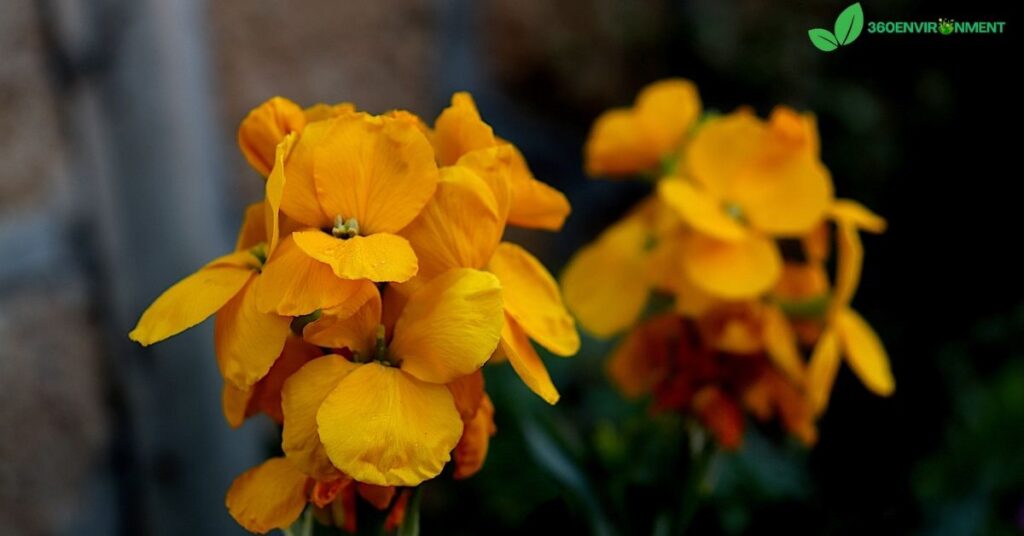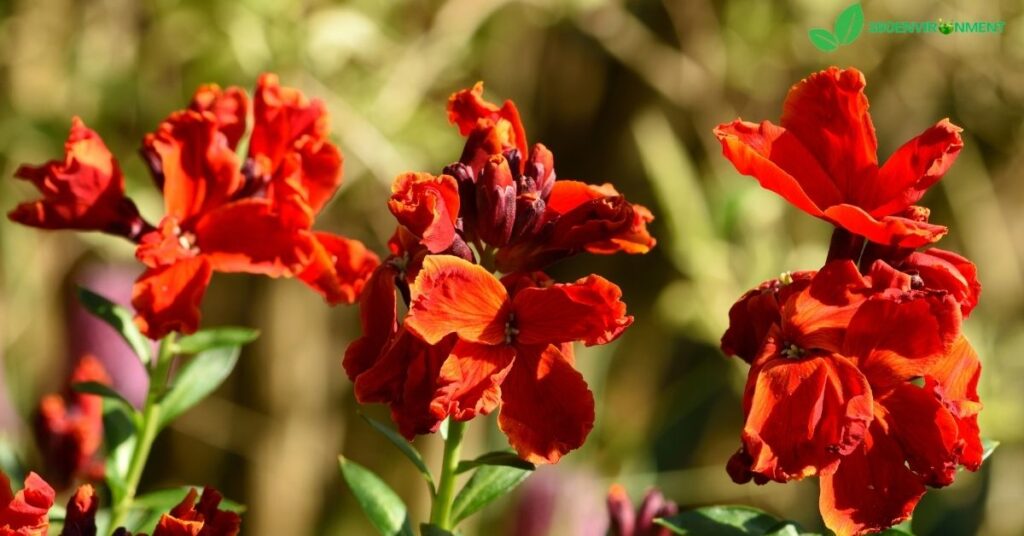The Siberian Wallflower (Erysimum cheiri), also known as the Cheiranthus or Bowles’ Wallflower, is a hardy, perennial plant with bright orange and yellow flowers. Its resilience in harsh, cold climates, particularly in the Siberian region, has made it a symbol of endurance and adaptability in the plant world. This article delves into the environmental significance of the Siberian Wallflower, its adaptability to extreme climates, its ecological role, and the broader environmental implications of preserving such resilient species in the face of global climate change.
1. Introduction to the Siberian Wallflower
The Siberian Wallflower is a native species to the cold, harsh regions of Siberia, but it has adapted well to a variety of temperate climates across the Northern Hemisphere. Despite its ability to thrive in such conditions, it remains a relatively underappreciated plant outside its native regions.

1.1. Taxonomy and Botanical Description
- Scientific Name: Erysimum cheiri
- Family: Brassicaceae (Mustard family)
- Common Names: Siberian Wallflower, Cheiranthus, Wallflower
- Habitat: Cold, rocky soils; mountainous regions
This wallflower typically grows to a height of 30–70 cm, displaying bright orange to yellow flowers in spring, a striking contrast to the often bleak environment it inhabits. The plant is highly drought-tolerant and can thrive in poor soil conditions, making it ideal for challenging environments like alpine terrains or rocky gardens.
1.2. Historical and Cultural Significance
It holds a place in both cultural and ecological history. In parts of Europe and Asia, the plant was commonly grown in monastery gardens, often symbolizing steadfastness due to its ability to grow in cracks and crevices of walls and cliffs. The plant has been historically noted for its medicinal properties, used in traditional remedies for ailments such as inflammation and respiratory issues. Additionally, its vibrant blooms were a symbol of hope during long, harsh winters.
2. Adaptability to Extreme Climates
They are well-known for their ability to adapt to extremely cold environments, withstanding freezing temperatures that can drop well below zero. This adaptability has important ecological implications, especially as global temperatures continue to fluctuate unpredictably.

2.1. Surviving Siberia’s Harsh Climate
The Siberian Wallflower’s success in Siberia—a region known for its subarctic climates, permafrost, and short growing seasons—can be attributed to several unique adaptations:
- Drought Resistance: The plant can survive long periods without water, crucial for surviving the harsh Siberian winters.
- Deep Root Systems: These allow it to extract moisture and nutrients from deeper layers of soil, ensuring survival in nutrient-poor environments.
- Cold Tolerance: Siberian Wallflowers can withstand freezing temperatures thanks to their ability to go dormant during winter, minimizing their metabolic processes to conserve energy.
2.2. Adaptation to Soil and Terrain
Siberian Wallflowers are highly versatile in their ability to grow in a variety of soil types, from sandy to rocky soils. This flexibility makes them a valuable species for soil stabilization and preventing erosion in fragile ecosystems, particularly in mountainous and alpine regions. They are commonly used in ecological restoration projects to restore damaged landscapes, particularly in areas with poor, rocky soil where other plants struggle to thrive.
3. Ecological Role and Benefits
Siberian Wallflowers contribute to the ecosystem in multiple ways, from supporting pollinators to promoting biodiversity in challenging environments.

3.1. A Haven for Pollinators
The Siberian Wallflower’s bright, fragrant flowers attract a variety of pollinators, including bees, butterflies, and even moths. In regions where few plants can survive the cold, it serves as a critical source of nectar early in the growing season.
Pollinator species such as bumblebees, which are adapted to cold environments, heavily rely on wallflowers during the brief Siberian summer. By providing essential resources to these pollinators, the Siberian Wallflower plays a key role in sustaining local ecosystems.
3.2. Supporting Biodiversity
In regions where plant diversity is low, such as the high-altitude and cold-climate environments, the Siberian Wallflower becomes even more important. By offering both shelter and food for a variety of insect species, it supports a broader web of biodiversity. Additionally, the plant’s seeds feed small rodents and birds, adding to its ecological importance.
The Siberian Wallflower is often one of the first plants to colonize disturbed soils, such as those affected by landslides or human activities. Its ability to stabilize soil and establish root systems makes it a pioneer species that paves the way for other plants to follow.
4. Environmental Importance of Siberian Wallflowers in Global Ecosystems
In an era of rapid environmental change, plants like the Siberian Wallflower are increasingly valuable to study and protect. Their resilience in the face of extreme conditions can offer insights into strategies for preserving biodiversity and mitigating the effects of climate change.

4.1. A Model for Climate-Resilient Plants
As temperatures rise and ecosystems are increasingly disrupted by erratic weather patterns, the Siberian Wallflower serves as a model for other species that might need to adapt to changing conditions. Its cold and drought tolerance, paired with its ability to grow in nutrient-poor soils, offer lessons in how plants can survive in marginal environments. This has implications for agriculture and landscape restoration efforts in regions threatened by desertification and drought.
4.2. Role in Carbon Sequestration
The Siberian Wallflower, like other plants, plays a role in sequestering carbon from the atmosphere. Its perennial nature means that, once established, it can continue to absorb carbon over multiple growing seasons. While individual plants may not absorb large amounts of carbon, the widespread planting of resilient species like the Siberian Wallflower can contribute to overall efforts to mitigate climate change by enhancing carbon sinks in marginal lands.
5. Conservation and Restoration Potential
Due to its resilience, the Siberian Wallflower is an ideal candidate for use in ecological restoration projects, especially in regions that have been degraded by human activities or climate events. The plant’s ability to stabilize soil and support pollinators makes it a valuable asset in efforts to restore ecological balance.

5.1. Use in Restoration Ecology
Restoration projects in mountainous and alpine environments, where soil erosion is a significant threat, have successfully used Siberian Wallflowers to help stabilize fragile landscapes. In addition, these plants are often introduced to disturbed ecosystems, such as mining sites or deforested areas, where they help initiate the recovery of native plant communities.
5.2. Threats to the Siberian Wallflower
While the Siberian Wallflower is not currently considered endangered, its habitats face threats from human activities such as mining, deforestation, and urbanization. Moreover, climate change may further threaten the specific ecological conditions that this plant requires to thrive. If temperatures increase in the Siberian region, for example, the delicate balance that allows the Siberian Wallflower to thrive could be disrupted, pushing it to the brink of survival.
6. Cultivation and Garden Uses
Beyond its ecological importance, the Siberian Wallflower has a long history of being cultivated for ornamental purposes. Its vibrant colors and hardiness make it a popular choice for gardeners looking to add a splash of color to rock gardens or borders in colder climates.

6.1. Growing Conditions
Siberian Wallflowers thrive in well-drained, slightly alkaline soil, but they are adaptable to a wide range of soil types, from sandy to clay soils. The key to successful cultivation is ensuring good drainage, as these plants do not tolerate waterlogged conditions.
Sunlight: Full sun to partial shade
Soil: Well-drained, moderately fertile
Watering: Moderate; drought-tolerant once established
Flowering Season: Spring to early summer
6.2. Ornamental Uses in Landscaping
Siberian Wallflowers are commonly used in rock gardens, alpine gardens, and borders where their bright, fragrant flowers provide a striking contrast to the surrounding greenery. Their ability to grow in rocky crevices makes them particularly well-suited for difficult areas where other plants might struggle. In colder climates, they are often paired with other spring-flowering plants like tulips or daffodils to create a colorful display after the snow melts.
7. Siberian Wallflower as a Symbol of Environmental Resilience
The Siberian Wallflower has become more than just a plant in ecological discussions; it has become a symbol of environmental resilience. Its ability to thrive in extreme conditions, coupled with its beauty and ecological importance, makes it a powerful reminder of the importance of preserving and studying resilient species in the face of environmental degradation.

7.1. Lessons from Nature’s Survivors
In the context of climate change, the Siberian Wallflower offers lessons about the importance of biodiversity and adaptation. Species like this that can endure harsh climates are becoming increasingly valuable as indicators of ecological health. By studying how such species survive and thrive, we can gain insights into how ecosystems might be managed and preserved in an uncertain environmental future.
7.2. The Role of Native Plants in Environmental Restoration
The use of native plants like the Siberian Wallflower in restoration projects underscores the importance of preserving local biodiversity. Native plants are often better adapted to local conditions than non-native species, making them more resilient in the long term. The Siberian Wallflower’s role in stabilizing soils and supporting pollinators highlights the broader importance of incorporating native species into environmental restoration efforts around the world.
8. Conclusion
The Siberian Wallflower is a remarkable example of nature’s adaptability. Its survival in some of the most extreme environments on Earth makes it an essential species for understanding resilience in the natural world. As we face increasing environmental challenges, including habitat loss and climate change, plants like the Siberian Wallflower may hold the key to preserving biodiversity and stabilizing ecosystems.
By understanding and appreciating the ecological role of the Siberian Wallflower, we can work toward greater conservation efforts to protect not just this species but the delicate balance of the ecosystems it supports. In the face of global environmental change, the Siberian Wallflower stands as a symbol of resilience, beauty, and the enduring power of nature.
In conclusion, the Siberian Wallflower offers valuable insights into how we can conserve, restore, and manage fragile ecosystems, ensuring that these vital species continue to thrive and support biodiversity well into the future.
9. FAQs about the Siberian Wallflower
To provide further insights into the importance and characteristics of the Siberian Wallflower, here are some frequently asked questions that may be helpful for understanding its ecological role and significance:

9.1. Where can the Siberian Wallflower be found in the wild?
The Siberian Wallflower is predominantly found in cold, mountainous regions, particularly in Siberia and parts of Europe. It thrives in rocky or poor soil, and you can often find it growing in crevices, on cliff faces, and in areas with little competition from other plant species.
9.2. Can I grow the Siberian Wallflower in my garden?
Yes! The Siberian Wallflower is relatively easy to cultivate, especially in temperate or colder climates. It prefers well-drained soil and sunny locations, but it can tolerate partial shade. Once established, it is also drought-tolerant, making it a great option for low-maintenance gardens.
9.3. What role does the Siberian Wallflower play in supporting pollinators?
The Siberian Wallflower’s bright orange and yellow blooms attract a wide variety of pollinators, including bees, butterflies, and moths. In colder climates, where fewer flowers are available, the Siberian Wallflower is a vital source of nectar for these pollinators during the spring and early summer.
9.4. Why is the Siberian Wallflower considered environmentally significant?
The Siberian Wallflower is a symbol of environmental resilience due to its ability to thrive in extreme climates, such as those found in Siberia. Its role in stabilizing soil, supporting biodiversity, and providing critical resources for pollinators highlights its environmental importance. Additionally, it serves as an example of how resilient species can help mitigate the effects of climate change in fragile ecosystems.
9.5. How is the Siberian Wallflower used in environmental restoration?
The Siberian Wallflower is often used in environmental restoration projects, particularly in areas with poor or eroded soil. Its deep root systems help stabilize soil, and its ability to grow in nutrient-deficient environments makes it an excellent candidate for restoring degraded landscapes. It also serves as a pioneer species, helping other plants to establish themselves in restored ecosystems.
9.6. Is the Siberian Wallflower at risk due to climate change?
While the Siberian Wallflower is not currently classified as endangered, it may face challenges due to climate change. As global temperatures rise, the delicate balance of its native habitats could be disrupted. The warming of regions like Siberia may reduce the plant’s ability to thrive in its current environments, potentially threatening its survival in the wild.
Read More: Wildflower with a Royal Name: Nature’s Regal Jewel
